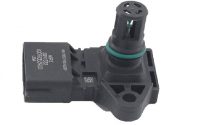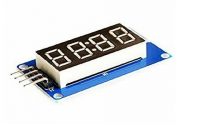Mobile Cellphone Battery Charging Circuit with Explanation
A mobile battery charger circuit is a device that can automatically recharge a mobile phone’s battery when the power in it gets low. Nowadays mobile phones have become an integral part of everyone’s life and hence require frequent charging of battery owing to longer duration usage.
Battery chargers come as simple, trickle, timer-based, intelligent, universal battery charger-analyzers, fast, pulse, inductive, USB based, solar chargers, and motion powered chargers. These battery chargers also vary depending on the applications like a mobile phone charger, battery charger for vehicles, electric vehicle batteries chargers and charge stations.
Charging methods are classified into two categories: fast charge method and slow charge method. Fast charge is a system used to recharge a battery in about two hours or less than this, and the slow charge is a system used to recharge a battery throughout the night. Slow charging is advantageous as it does not require any charge detection circuit. Moreover, it is cheap as well. The only drawback of this charging system is that it takes maximum time to recharge a battery.
Auto-Turn off Battery Charger
This project aims to automatically disconnect a battery from the mains when the battery gets fully charged. This system can be used to charge partially discharged cells as well. The circuit is simple and consists of AC-DC converter, relay drivers, and charge stations.

Circuit Description
In an AC-DC converter section, the transformer step-downs the available AC supply to 9v AC at 75o mA which is rectified by using a full-wave rectifier and then filtered by the capacitor. The 12v DC charging voltage is provided by the regulator and when the switch S1 is pressed, the charger starts working and the power-on LED glows to indicate the charger is ‘on’.
The relay driver section consists of PNP transistors to energize the electromagnetic relay. This relay is connected to the collector of the first transistor and it is driven by a second PNP transistor which in turn is driven by the PNP transistor.
In the charging section, the regulator IC is biased to give about 7.35V. To adjust the bias voltage, preset VR1 is used. A D6 diode is connected between the output of the IC and a limiting output voltage of the battery up to 6.7V is used for charging the battery.
When the switch is pushed, it latches relay and starts charging the battery. As the voltage per cell increases beyond 1.3V, the voltage drop starts decreasing at R4. When the voltage falls below 650 mV, then the T3 transistor cuts off and drives to T2 transistor and in turn, cuts off transistor T3. As a result, relay RL1 gets de-energized to cut off the charger and red LED1 is turned off.
The charging voltage, depending on the NiCd cell, can be determined with the specifications provided by the manufacturer. The charging voltage is set at 7.35V for four 1.5V cells. Currently, 700mAH cells, which can be charged at 70 mA for ten hours, are available in the market. The voltage of the open circuit is about 1.3V.
The shut-off voltage point is determined by charging the four cells fully (at 70 mA for fourteen hours) and adding the diode drop (up to 0.65V) after measuring the voltage and bias LM317 accordingly.
In addition to the above simple circuit, the real-time implementation of this circuit based on the solar power projects are discussed below.
Solar Power Charge Controller
The main objective of this solar power charge controller project is to charge a battery by using solar panels. This project deals with a mechanism of the charge controlling that will also do overcharge, deep discharge, and under-voltage protection of the battery. In this system, by using photovoltaic cells, solar energy is converted into electrical energy.

This project comprises hardware components like a solar panel, Op-amps, MOSFET, diodes, LEDs, potentiometer, and battery. Solar panels are used to convert sunlight energy into electrical energy. This energy is stored in a battery during day time and makes use of it during night time. A set of OP-AMPS are used as comparators for monitoring of panel voltage and lead current continuously.
LEDs are used as indicators and by glowing green, indicates the battery as fully charged. Similarly, if the battery is undercharged or overloaded, they glow red LED. The Charge controller makes use of MOSFET – a power semiconductor switch to cut off the load when the battery is low or in an overload condition. A transistor is used to bypass the solar energy into a dummy load when the battery is fully charged and it protects the battery from getting overcharged.
Microcontroller Based Photovoltaic MPPT Charge Controller
This project aims to design a charge controller with a maximum power point tracking based on a microcontroller.

The major components used in this project are solar panel, battery, inverter, wireless transceiver, LCD, current sensor, and temperature sensor. The power from the solar panels is fed to the charge controller which is then given as output into the battery and is allowed for energy storage. The output of the battery is connected to an inverter that provides outlets for the user to access the stored energy.
The solar panel, battery, and inverter are bought as the off-shell parts while the MPPT charge controller is designed and built by solar knights. An LCD screen is provided for displaying storage power and other alert messages. The output voltage is varied by pulse width modulation from the microcontroller to MOSFET drivers. The way to track a maximum power point by using MPPT algorithm implementation in the controller ensures that the battery is charged at maximum power from the solar panel.
This is how one can make one’s battery charger for mobile phones. The two examples mentioned here can make the process easier for you. Moreover, if you have any doubts and need help with implementing real-time projects and industrial battery charger circuits, you can comment in the comment section below.
Photo Credits
- Mobile Battery Charger Circuit by ggpht
- Photovoltaic MPPT Charge Controller by eecs





Comments are closed.